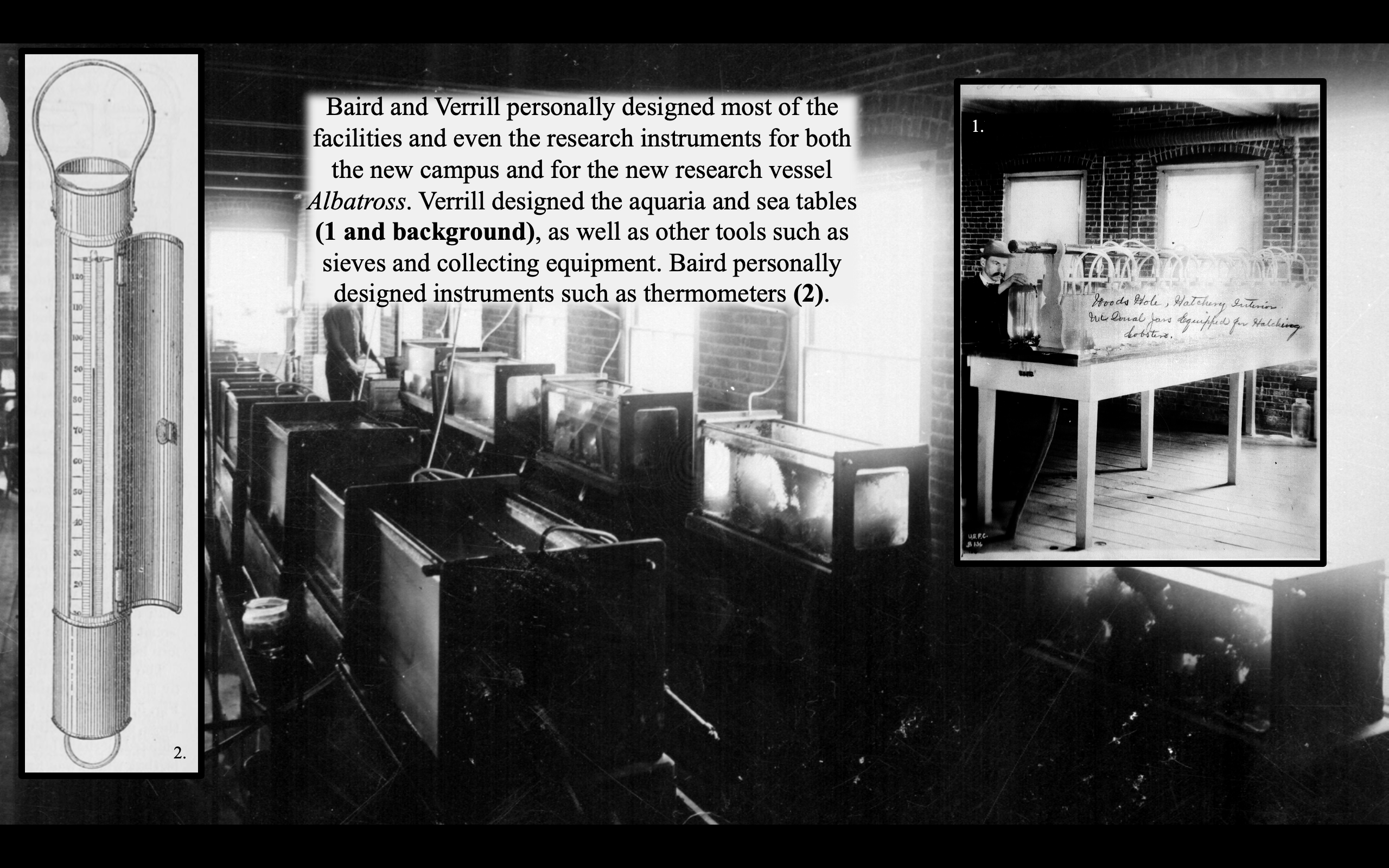150 Years of Woods Hole Science
15

Fig 1: Woods Hole hatchery interior Mcdonald jars equipped for hatching lobsters, 1891. Credit: NOAA Fisheries/Worth. From NOAA archives gallery at https://apps-nefsc.fisheries.noaa.gov/rcb/photogallery/assorted.html A worker at the sea tables in the hatchery.
Fig 2: From Kidder, 1887, Vol XIII, pp. 185-214. (p. 191, Fig 4.) Baird’s protected thermometer from 1873, still in use at shore stations almost 100 years later. In addition to scientific instruments, he and Verrill also designed much of the layout and even the benches and cabinets for the new Fisheries laboratory.
Background image: Woods Hole Lab first floor laboratory, with William P. Seal. Credit: Smithsonian Institution Archives. From NOAA archives gallery at https://apps-nefsc.fisheries.noaa.gov/rcb/photogallery/assorted.html
References:
Galtsoff, P.S., 1962. The story of the bureau of commercial fisheries, Biological Laboratory, Woods Hole, Massachusetts (Vol. 145). US Department of the Interior, Bureau of Commercial Fisheries.
p. 36:
“Baird himself contributed to the technique of temperature observations by designing, in 1873, a protected thermometer, enclosed in cylindrical copper cases with a hinged door in front. This type was devised for reading water temperatures at lighthouses and at shore stations. The instrument is still being used for observations in shallow waters when great accuracy is not needed.”; “The equipment of the laboratory and hatchery was designed by Baird with the assistance of Verrill. Both men had considerable experience in that type of work. Verrill was particularly skillful in designing aquaria tanks and tables. …The actual construction and materials used by the contractor for laboratory benches, chemical and office tables, and of other equipment were meticulously scrutinized and personally approved by Baird.”; p. 37 Fig. 19 “Laboratory benches and other furniture were designed by Baird and Verrill.”; p. 40 “Other types of collecting gear such as tangle bars, rake dredges, and various sieves (so-called table sieve and cradle sieve) were designed by Verrill.”
Kidder, J. H., 1887. Report on the Thermometers of the U. S. Commission of Fish and Fisheries. U. S. Commission of Fish and Fish and Fisheries, Report of the Commissioner for 1885. – Fig 2